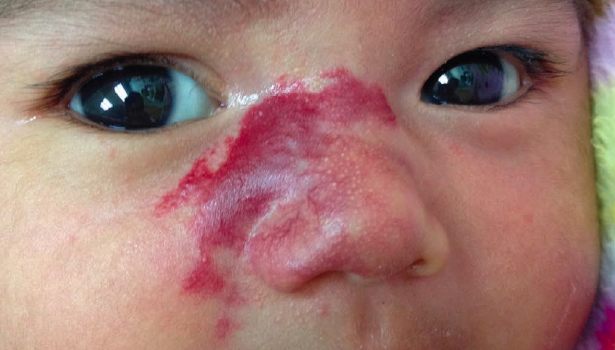When it comes to rare but significant health conditions affecting newborns, infantile hemangiomas always make it to the discussion table. These benign vascular tumors are more common than one might think, affecting an estimated 4-5% of infants globally. To demystify this condition, I recently sat down with Dr. Anthony Mancini, a distinguished pediatric dermatologist and professor at Northwestern University, for an episode of the Derm Club podcast. Our conversation extended from risk factors and pathophysiology to treatment options, illuminating crucial insights for both healthcare providers and concerned parents.
The Complex Web of Risk Factors
Dr. Mancini provided a comprehensive overview of the multifaceted risk factors for infantile hemangiomas. Premature birth tops the list, but it doesn’t act in isolation. Multiple gestation pregnancies, belonging to the white race, advanced maternal age, placental abnormalities, and maternal hypertension during pregnancy also come into play. Intriguingly, no clear genetic predisposition has been identified, although research is ongoing in this area.
The absence of a genetic link makes it difficult to predict which infants will develop hemangiomas, complicating both prevention and early intervention. As for why these particular risk factors are significant, Dr. Mancini indicated that the medical community is still in the process of unraveling these complexities. However, the confluence of these factors tends to create an environment that favors the formation of these vascular tumors.
The Science Behind Infantile Hemangiomas
Understanding the pathophysiology of infantile hemangiomas is essential for developing effective treatments. Dr. Mancini elucidated some of the prevailing theories that drive current research. One promising area is the role of circulating endothelial progenitor cells. These cells are believed to contribute to the rapid growth phase of the hemangioma. Furthermore, there’s speculation regarding the involvement of placental tissues and placental endothelial cells. More recent research is probing the potential relationship between infantile hemangiomas and the renin-angiotensin system, a hormonal system that regulates blood pressure and fluid balance.
These tumors usually follow a predictable timeline, starting with a proliferation phase that can last up to nine to 12 months. This is followed by an involution phase, where the hemangioma starts to fade, generally over a span of three to six years. Interestingly, the most rapid growth typically occurs between five and eight weeks of postnatal age.
Early Intervention and Treatment Modalities
The saying “A stitch in time saves nine” holds true for the management of infantile hemangiomas. Dr. Mancini emphatically underscored the importance of early intervention, especially for hemangiomas that present higher risks such as those near the eye or airway. Primary care providers need to be adept at recognizing these vascular lesions early on to make prompt referrals to specialists for intervention.
Propranolol, a beta-blocker, has ascended to the gold standard for treatment. This medication has proven highly effective in halting or slowing down the growth of hemangiomas, even expediting the natural healing process. While there might be concerns about administering beta-blockers to infants, Dr. Mancini reassured that they are generally well-tolerated. However, he warned that caregivers should be vigilant for potential side effects like low blood sugar, bronchospasm, and even nightmares.
Topical timolol, another beta-blocker, is a secondary option, primarily used for smaller, superficial hemangiomas. It must be applied cautiously, as it can be dangerous if absorbed systemically in large amounts. Steroids, once the standard care, are now a last resort and are used in very specific cases. Surgical and laser options are also available but are usually reserved for special circumstances like residual fibrofatty mass or resistance to medical treatment.
Understanding the complexity of infantile hemangiomas, from their risk factors to their underlying pathophysiology and treatment options, can better equip healthcare providers and parents to manage this condition. While the medical community has made significant strides in understanding these benign vascular tumors, much still remains to be discovered. In light of this, the importance of early diagnosis and intervention cannot be overstated, and healthcare providers must remain updated on the latest research and treatment options.
Dr. Mancini’s insightful discussion serves as a comprehensive guide for anyone dealing with infantile hemangiomas, either professionally or personally. The conversation adds to a growing body of work aimed at simplifying and clarifying this complex condition, which will no doubt contribute to better patient outcomes in the future.





